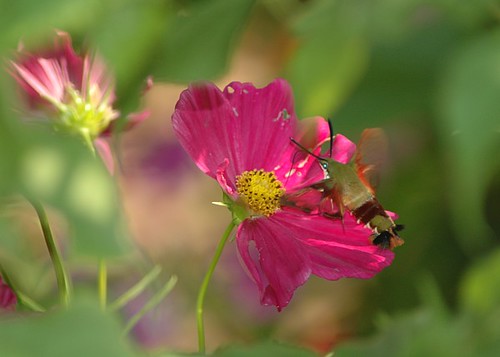If imitation is the most sincere form of flattery, then there
is an insect that holds great admiration for birds: the hummingbird moth. A small subset of the family of Sphinx moths
actually mimics hummingbirds in their appearance and behavior. Their broad bodies, fast-beating wings, and
hover-feeding during daylight hours cause many to think that they are in fact
tiny hummingbirds, visiting flowers across the continent.
To the contrary, these moths start their lives like any
other moths: as eggs affixed to leaves of a host plant (which can include
honeysuckles, heaths, roses, blueberries, thistles, and others). Caterpillars look much like others of the
Sphinx moth family: large, mostly green, and bearing a pointed “horn” on the
posterior end. It is not until adulthood
that their bird-like tendencies become apparent. Before emerging from their silky cocoons,
they are just moths, but after their metamorphosis they become the birds of the lepidopteron
world.
For the past month, hummingbird moths have been flying in
Vermont. Look for them near gardens,
meadows, and other open areas where flowers flourish. Their rapid movements make them difficult to
photograph, but they are seemingly oblivious to human presence and allow for a
close-approach. Watch for their long
proboscis (hollow, straw-like tongue), which they keep furled in a tight spiral
when not in use. When they approach a
blossom, the proboscis unravels, stretching nearly the length of their bodies
to extract nectar. They are a thrill to
see, a delight to observe, and a highlight of any warm summer day.



Here in Plainfield, VT, these things are all over our flower beds, from morning till dusk. I have never seen them before, but now, there are many.
ReplyDeleteSaw one night feeding on deck flowers. Got some still pics and some video of the so called pest. Still cool to watch and was oblivious to my presence. Grand Isle,Vt
ReplyDelete